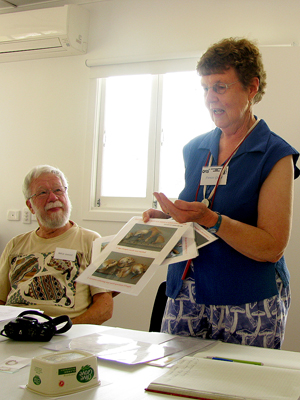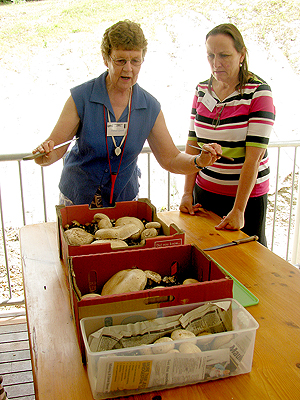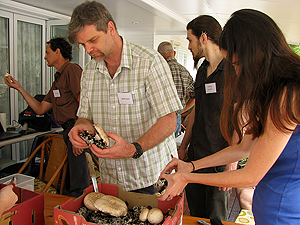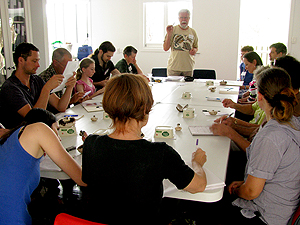12 October, 2013
The very successful Beginners workshop was held at the Cubberla Witton Catchment Network (CWCN) Centre at Chapel Hill. The workshop was a mixture of theory, demonstrations and practical experience.
The following material from the workshop is available for downloading in .pdf format:
Beginners Workshop Outline – Download [.pdf]
This is the presenters’ notes and contains all the information covered in the workshop.
Numbered Tags with Measuring Scale, 1-40 – Download [.pdf]
Tags to use when you photograph the specimen.
The Numbered Tags are made to scale. Do NOT reduce or enlarge when printing them.
Specimen Label – Download [.pdf]
A sheet on which you write some specimen details. It is kept with the specimen.
Simple Fungus Record Sheet – Download [.pdf]
A sheet on which you can write all the specimen details.
Macrofungi Description Aid – Download [.pdf]
Some simple diagrams to help you identify fungi features.
Macroscopic Description Guide – Jean Lodge – Download [.pdf]
Lots more diagrams to help identify fungi features.
Identifying Fungi by the Sieve Method – Download [.pdf]
A flowchart showing the Sieve Method process of identifying fungi.
Key to Agaricus species in Queensland – Download [.pdf]
This is a trial key for Queensland Agaricus species.
QMS would greatly appreciate your feedback: info [at] qldfungi.org.au
Some more useful resources are free to download from our Collecting page.




Workshop Aims
An introduction to the skills of collecting on a foray Describing and processing the collections How to start identifying the specimens Spore prints/ making slides/using chemicals included (if time permits)
Agenda
Module 1 Going on a foray 9.30 Introduction PL 9.40 Making a spore print FEG Practical exercise 1 9.50 Before you go on a foray PL – Equipment Demonstration 10.00 What happens on a foray PL 10.05 How to collect a specimen FEG Practical Exercise 2 10.15 What to record FEG
10.30 Coffee Break
Module 2 After the foray – processing your specimens 10.45 Labelling and tracking your specimens PL 11.00 Describing your collection FEG Practical exercise 3
Module 3 What fungus is that? 11.45 Identification methods PL 12.05 Using a field guide for ID FEG Practical exercise 4
Module 4 Using a key 12.15 Using a key PL Practical exercise 5
12.45 Lunch
Module 5 Identification with the microscope 13.15 Adding microscopic features to your description. FEG 13.30 Cutting and examining a section. PL Demonstration
Module 6 The fungal ID kit 13.45 Using the sieve method to identify fungi PL 13.55 Workshop conclusions FEG
14.00 Workshop ends – tidy up
